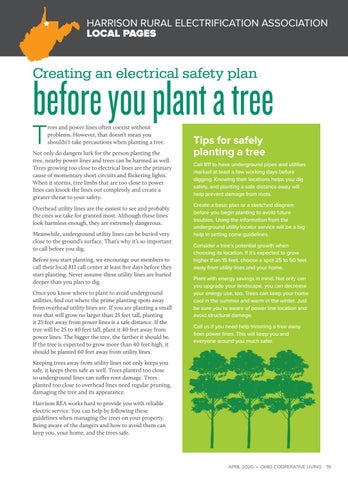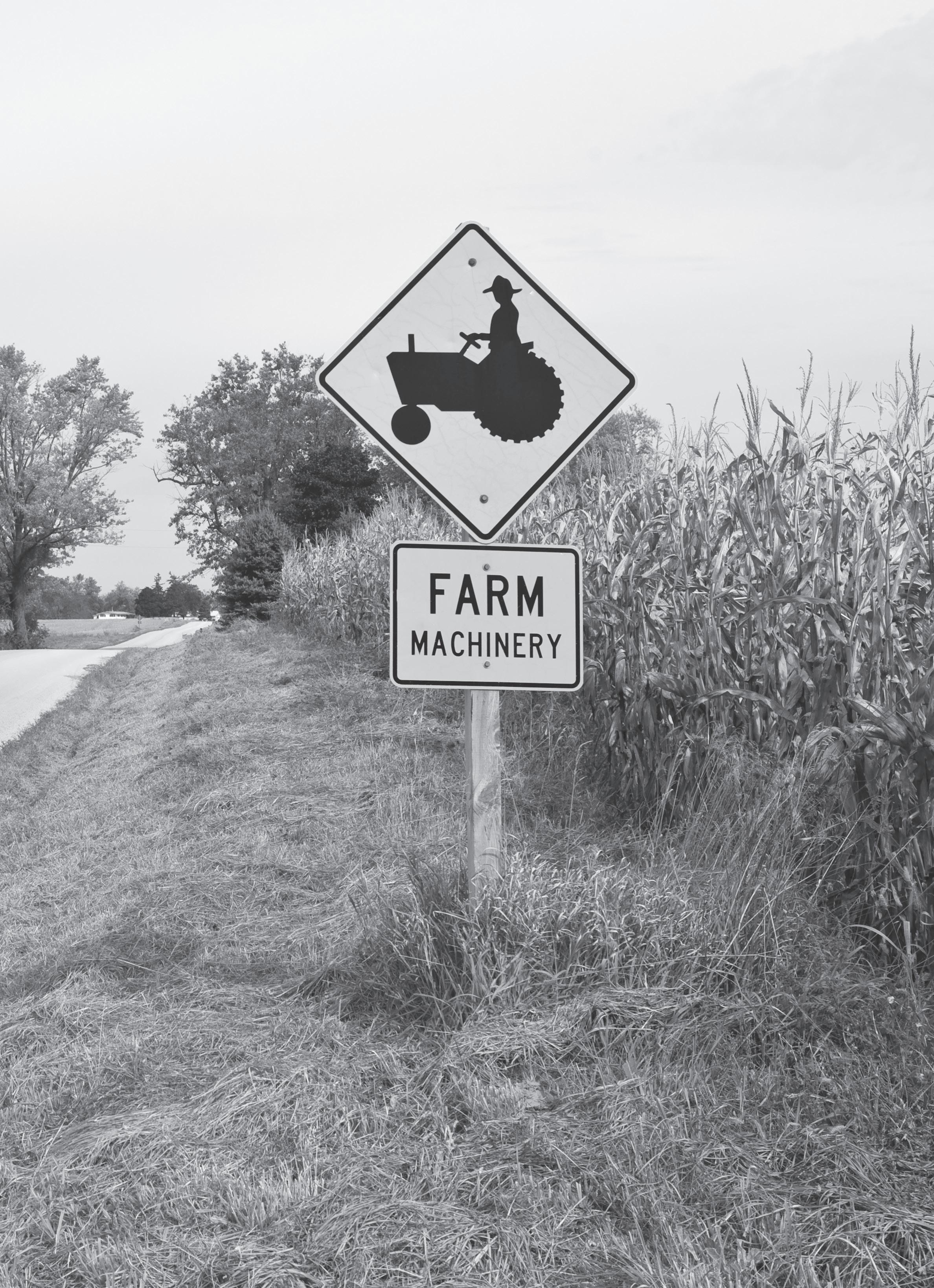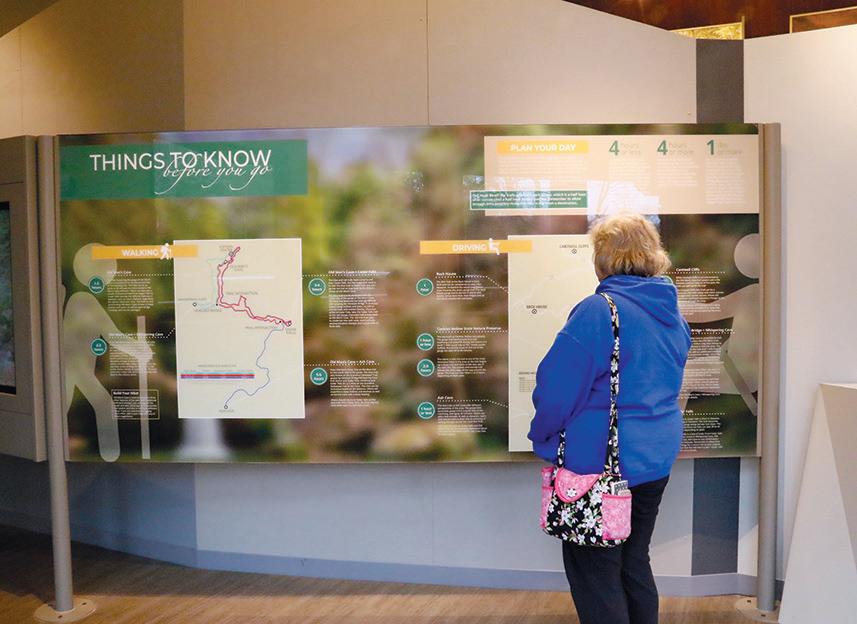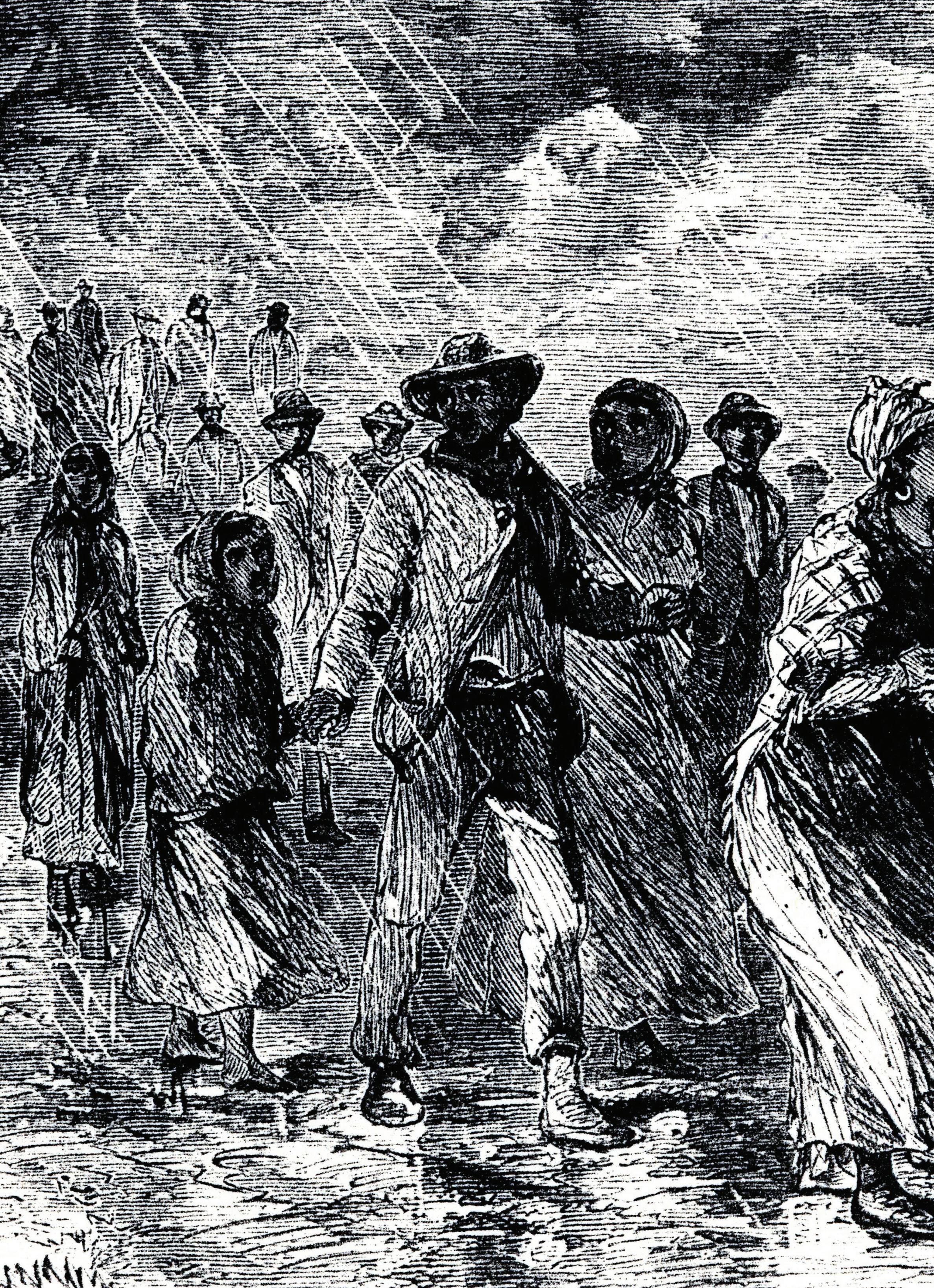HARRISON RURAL ELECTRIFICATION ASSOCIATION LOCAL PAGES
Creating an electrical safety plan
before you plant a tree
T
rees and power lines often coexist without problems. However, that doesn’t mean you shouldn’t take precautions when planting a tree.
Not only do dangers lurk for the person planting the tree, nearby power lines and trees can be harmed as well. Trees growing too close to electrical lines are the primary cause of momentary short circuits and flickering lights. When it storms, tree limbs that are too close to power lines can knock the lines out completely and create a greater threat to your safety. Overhead utility lines are the easiest to see and probably the ones we take for granted most. Although these lines look harmless enough, they are extremely dangerous. Meanwhile, underground utility lines can be buried very close to the ground’s surface. That’s why it’s so important to call before you dig. Before you start planting, we encourage our members to call their local 811 call center at least five days before they start planting. Never assume these utility lines are buried deeper than you plan to dig. Once you know where to plant to avoid underground utilities, find out where the prime planting spots away from overhead utility lines are. If you are planting a small tree that will grow no larger than 25 feet tall, planting it 25 feet away from power lines is a safe distance. If the tree will be 25 to 40 feet tall, plant it 40 feet away from power lines. The bigger the tree, the farther it should be. If the tree is expected to grow more than 40 feet high, it should be planted 60 feet away from utility lines.
Tips for safely planting a tree Call 811 to have underground pipes and utilities marked at least a few working days before digging. Knowing their locations helps you dig safely, and planting a safe distance away will help prevent damage from roots. Create a basic plan or a sketched diagram before you begin planting to avoid future troubles. Using the information from the underground utility locator service will be a big help in setting some guidelines. Consider a tree’s potential growth when choosing its location. If it’s expected to grow higher than 15 feet, choose a spot 25 to 50 feet away from utility lines and your home. Plant with energy savings in mind. Not only can you upgrade your landscape, you can decrease your energy use, too. Trees can keep your home cool in the summer and warm in the winter. Just be sure you’re aware of power line location and avoid structural damage. Call us if you need help trimming a tree away from power lines. This will keep you and everyone around you much safer.
Keeping trees away from utility lines not only keeps you safe, it keeps them safe as well. Trees planted too close to underground lines can suffer root damage. Trees planted too close to overhead lines need regular pruning, damaging the tree and its appearance. Harrison REA works hard to provide you with reliable electric service. You can help by following these guidelines when managing the trees on your property. Being aware of the dangers and how to avoid them can keep you, your home, and the trees safe.
APRIL 2020 • OHIO COOPERATIVE LIVING 19









